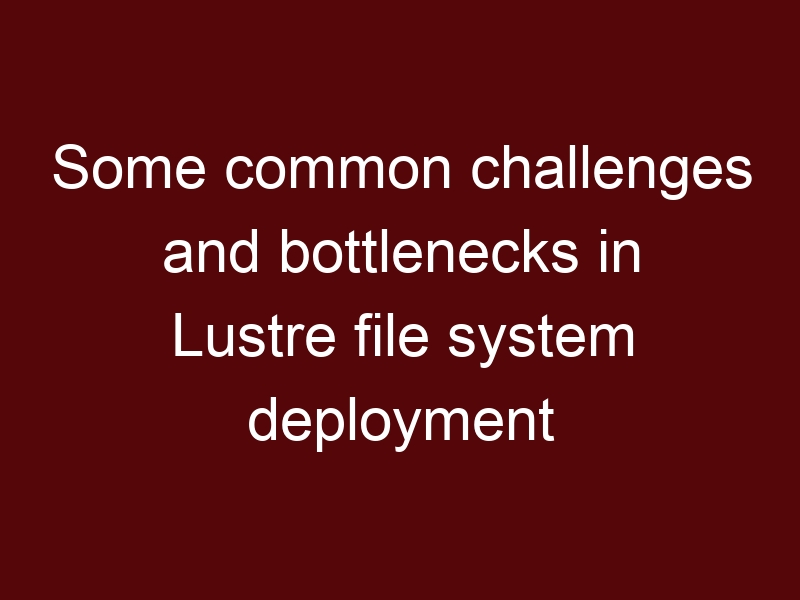Deploying a Lustre file system can be complex, and certain challenges and bottlenecks may arise, especially in large-scale environments. Here are some common challenges and ways to mitigate them:
- Metadata Bottleneck: The centralized MDS can become a performance bottleneck, particularly in scenarios with a large number of small files or intensive metadata operations. To mitigate this, consider using multiple MDSs and distributing metadata across them to achieve better load balancing and scalability.
- Locking Overhead: In environments with heavy concurrent access to shared files, the Distributed Lock Manager (DLM) can introduce locking overhead. To alleviate this, optimize your application to minimize the need for exclusive locks and prefer non-blocking I/O operations.
- Network Latency: High network latency can impact Lustre’s performance, especially when accessing remote OSTs. Using high-speed, low-latency interconnects like InfiniBand or Ethernet with RDMA capabilities can help reduce network overhead and improve performance.
- Data Striping Misalignment: Poorly aligned data striping can lead to uneven data distribution across OSTs and result in suboptimal performance. Properly configuring striping parameters based on the workload and underlying storage layout can help achieve balanced data distribution.
- Disk Performance Imbalance: Uneven disk performance among OSTs can lead to performance imbalances. Monitoring OST performance and using storage devices with similar performance characteristics can help prevent hotspots.
- OST Failures: OST failures can occur, and without redundancy, they can lead to data unavailability and data loss. To address this, use data replication or RAID configurations to provide data redundancy and enhance data durability.
- High Metadata Load: In scenarios with a high number of small files, metadata load can be significant. Implementing metadata caching on the client side can help reduce the number of metadata requests sent to the MDS and alleviate the MDS load.
- Monitoring and Troubleshooting: Setting up proper monitoring and alerting for Lustre components is essential for identifying performance bottlenecks and potential issues. Utilize Lustre monitoring tools and file system diagnostic utilities to troubleshoot and resolve problems promptly.
- File System Fragmentation: Over time, Lustre file systems can experience fragmentation, leading to decreased performance. Regularly defragmenting the file system and performing file re-striping can help maintain optimal performance.
- System Tuning: Properly tuning Lustre for your specific application and workload can significantly impact performance. Adjusting Lustre tunable parameters based on the environment and workload characteristics can help optimize performance.
Overall, Lustre offers a high-performance and scalable distributed file system solution, but its successful deployment requires careful planning, monitoring, and tuning to address potential bottlenecks and challenges effectively. By understanding and addressing these issues, Lustre can deliver reliable and efficient storage for data-intensive applications in HPC and large-scale storage environments.





